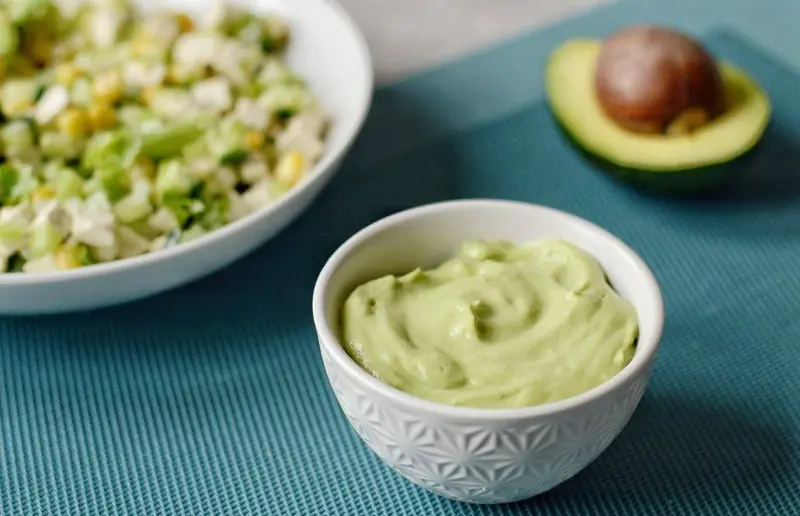
Mayonnaise is typically made with raw egg yolks, which can pose health risks due to potential salmonella contamination. To mitigate these risks, chefs in restaurants often pasteurize the eggs beforehand, boil them hard, or skip the controversial ingredient altogether, opting for plant-based alternatives like soy milk or aquafaba (the liquid from canned chickpeas or beans). Vegan mayonnaise is considered healthier compared to traditional mayonnaise because it doesn’t trigger egg allergies and can be consumed with dietary restrictions: nutritionists recognize that egg-free mayonnaise poses less of a threat to the body when overeating. This sauce can be spread on sandwiches and used to dress salads. Unlike egg-based mayonnaise, the egg-free version is suitable for baking, as it doesn’t separate when heated.
Ingredients (for 4 servings): 170 g avocado flesh; 60 g vegetable oil; 20 g lemon juice; 5 g mustard; 2 cloves of garlic; 1/3 tsp salt; a pinch of black pepper.
Peel the avocado, remove the pit, and place the flesh in a tall container.
Squeeze lemon juice over the avocado, add salt, grated garlic, pepper, and mustard.
Blend with an immersion blender, adding the oil in three stages, and mix until smooth.
Life Hack
If you do decide to make mayonnaise using the classic recipe with raw eggs, it’s essential to pasteurize them first to prevent salmonellosis. Pasteurization involves heating the eggs in their shells to a specific temperature that is sufficient to kill harmful bacteria while not damaging the protein. At home, you can pasteurize eggs by immersing them in water at 60°C (140°F) for a few minutes. Fill a pot with cold water, submerge the eggs, and place it on the heat, bringing it to the specified temperature and maintaining it for 3–5 minutes. To stop further heating, reduce the flame. To prevent the egg whites from coagulating, gradually add cold water when the water temperature reaches 63–65°C (145–149°F). After pasteurization, the eggs should be quickly cooled by placing them in cold water.
